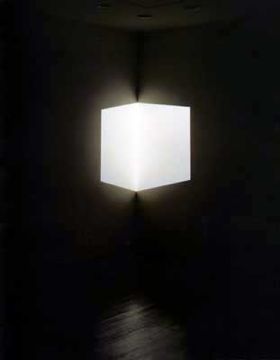On a recent visit to one of Lois Hetland’s classes at the Massachusetts College of Art and Design, Lois and I were engaged in a discussion about what teachers of art educators need to know in order to do our work effectively. Specifically, where does contemporary art fit in and how do we make a commitment to teach about (and with) contemporary art? What kind of commitment are we willing to make? What do professors on the college-level need to know about contemporary art in order to teach new art educators?
Steve Locke, an artist, professor at Mass Art and colleague of Lois’ made the point that many people involved in art education programs may consistently go to conferences like those hosted by the National Art Education Association, but how often do the same people attend contemporary art fairs? He argued that the knowledge base and experience with contemporary art just isn’t there. Now maybe I’m being naive, but you would think there would be a huge commitment on the part of university art education programs, and even on the part of art education organizations, to make direct experience with contemporary art a main priority.
Unfortunately, this is not the case.
In classrooms from Seattle to the South Bronx teachers continue to rely on “Andy Warhol projects” or mimicry-driven assignments that have students copy the styles of “modern” artists (aka dead for a while but a little less dead than Donatello and da Vinci) in the name of teaching about contemporary art. But what many call “modern” art isn’t really contemporary art: Cubism isn’t contemporary art; Dadaism isn’t contemporary art; Expressionism isn’t contemporary art; Impressionism and Post-Impressionism aren’t contemporary art. All of these isms influence contemporary art in one way or another, but they aren’t stand-ins. The Mark Bradfords and Mark Dions of the world aren’t found here. The Cao Feis and Ann Hamiltons of the world aren’t found in these isms.
Artists living and working today need to have a place in art education programs, as well as learning about major works and artists of the past. We need those who teach teachers to have real experience engaging with art being made today, and not just through magazines or computer screens. While I won’t advocate throwing out learning (or teaching) about Vincent van Gogh or Georges Seurat, I do feel we need to place less emphasis on many of these artists and spend less time creating projects around them (and you know exactly who I’m talking about: the Stairway to Heaven artists- the artists you know are wonderful, but have just gotten way too much airplay). In exchange for that time students, teachers, and student teachers can spend more time in museums, galleries and public art spaces experiencing different kinds of work and asking bigger questions to inform new teaching. How does this work inform our practice? How can we learn about both history and our changing world through examining the work of contemporary artists? How can we better utilize contemporary art and artists when making sense of “modern” art, and strike a balance between the art we love, the art that’s popular, and the art that helps kids make meaning?
While I tend to ask a lot of questions in this column, often hoping it will inspire different kinds of conversation, allow me to make a few suggestions this time around:
- Throw out projects and units that are simply about copying the style of one artist. Instead, juxtapose two or more artists and have students make art that’s inspired by what they see and the ideas behind the work. Getting inspiration to create work is a lot different than copying.
- Reconsider the artists you teach with in your own curriculum. Whether you teach studio art, art education, photography, sculpture, digital media, etc., ask yourself if and where are there opportunities to incorporate contemporary art. Whose voices lay silent?
- Spend time learning about contemporary art by making a commitment to “discover” a new artist each week, or at least each month. Subscribe to an art periodical that you don’t currently receive- even online. Visit the web sites of contemporary art museums in order to give life to the references and resources you currently use. Then, make plans to see more work in person.





Pingback: Teaching with Contemporary Art: The First Three Years | Art21 Blog